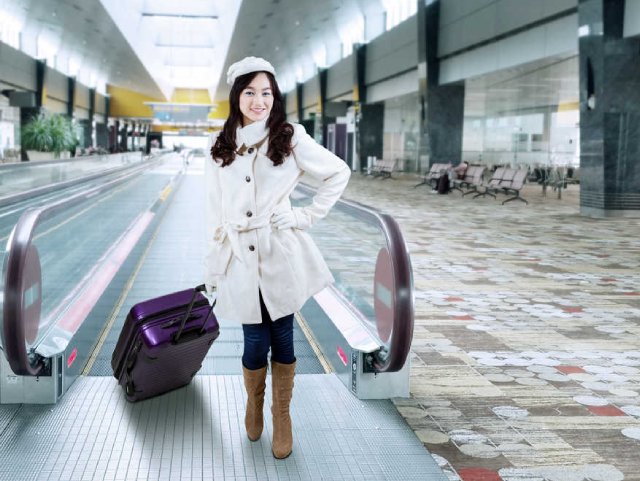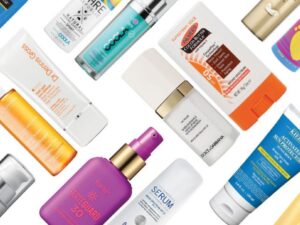Its travel season again, and outcome the cameras as well. You can’t wait to show off your travel pictures, but Alas! Sun burn, chapped lips, puffy eyes and insect bites have left your skin an unphotogenic mess. A few tips and tricks on a simplified and easy-to-carry skin and hair care regime can make your skin look healthy and radiant while you travel.
Our wanderlust takes us to various cities and townships- urbane, remote or exotic. For some of us, our professions require us to live out of a suitcase. Any wise traveler would want to travel light and pack efficiently. An intelligent traveler will do his homework on his destination. You can easily search the internet for the weather conditions of your travel destination. Is it hot and dry? Hot and humid? Cold and windy? Snowy? Rainy? Are you traveling to a tropical country, planning a camping trip, taking a trek or making a desert safari? Knowing your environment is very important to plan the right clothing and carry the right skin care products.
Air travel, especially long flights, can leave you looking like a wreck. The severe air-conditioning and low cabin pressure makes the cabin air especially dry. One also tends to drink less water during a flight, to avoid several visits to the loo. Most airlines do not allow passengers to carry liquids and sprays on-board. Check your local skin stores for skin-care travel kits, which usually contain a cleanser and moisturizer with SPF, in smaller sizes, usually 50-60 ml. Alternately, you can also create your own travel kit using a zip-locked pouch with small capped bottles, into which you can transfer your regular beauty and bath products. Bottles containing less than 100ml of liquid are usually permitted in hand baggage on most airlines. Carry a stick or jar lipbalm instead of a tube. Try the Sebamed or Neutrogena lip balms which contain SPF and protect your lips from sunburns, chapping and cold sores. Chose a stick deodorant over a spray as they are easy to carry and gentler on your skin. Pack perfume samples instead of full-sized bottles. You can also raid the beauty counters of your local mall for free samples of night creams or sunscreens, which usually are smaller sized tubes which are easy to carry while you travel. If your dermatologist’s clinic has a skin store as well, you could request your dermatologist for free tester tubes of skin care products. Unless you have sensitive skin or dry, colored or damaged hair, you can always rely on the bath products provided by your hotel. Do not use hotel soaps and moisturizers on your face, as they’re usually unlabeled, contain lanolins and are perfumed. These products can clog the pores of your facial skin and create acne and whiteheads.
Before boarding your plane, chose a heavier moisturizing cream (one containing sodium hyaluronate or squalene) over a gel moisturizer with a matte finish. Use a caffeine or Vitamin K based under eye cream for the skin around your eyes. Dress warm and use a urea-based hand cream to keep your hands and feet soft. When you’re in your seat, use the warm hand towels provided to you, to first wipe your hands, then your arm rests and food tray. Do not use hot towels on your face, as they can dry out your skin very fast. At the end of your flight, use a face scrub with gentle microbeads (avoid walnut and apricot scrubs), to unclog pores and thoroughly cleanse your skin.
Drink enough fluids to keep yourself well hydrated. You can have water, green tea, sodas and juices, but avoid caffeine and alcohol as they dehydrate your skin and your body. You can even carry an empty water bottle and fill it up at the boarding gates, once you’ve cleared the security checks. To calculate the correct amount of water to drink per day, divide your weight in pounds by half, that’s your fluid intake per day in ounces. So if you’re an adult woman weighing 120 pounds, you need to drink 60 ounces of fluids in a day. On a long flight, stand up, stretch your legs and take a walk up and down the aisle every 90 minutes. If that’s too bothersome, then flex your feet, rotate your ankles and do heel raises while staying on your seat. This is especially important if you’re an overweight person with heart issues, have varicose veins, or using birth control pills. This will prevent swollen feet and clotting inside your veins, which tends to occur when one sits in the same position for several hours at a stretch. If your legs feel red, hot and painful, ask for emergency medical care as soon as you land.
Irrespective of the climate of your travel destination, a medical-grade sunscreen is a must. Sunlight can penetrate tinted car windows, reflect off sand and snow, and penetrates water as well. So whether you’re on a beach, desert, national park or snow-covered mountains, you can and you will get sunburn if your skin is unprotected. Wear a cap, carry a scarf to protect your face, wear protective sun glasses and comfortable shoes. If you’re traveling to the States or the United Kingdom, you can buy some “sunscreen wet wipes”. These are easy to carry, and quick and non-fussy to apply, especially for children. Do not use sunscreen on children less than 2 years of age. It is safer to dress them in a cap and full-sleeved clothes.
Is the weather hot and dry? If so, apply moisturizer over your sunscreen, or chose a moisturizer with an SPF of 25 or above. Is it hot and humid? If that case, you can avoid moisturizers altogether. Use a sports sunscreen (like Banana Boat) which comes in the form of a light spray with water-like consistency. Shower at least twice a day with cool water, use talcum powder over your skin creases, and carry a calamine or camphor based soothing cream to keep prickly heat at bay. Aloe vera gels have soothing and healing properties on sunburns. Avoid toners while traveling.
Are you on a camping trip? Full length jeans or cargo pants are more sensible than shorts. Use an insect repellant cream, and carry a 1% hydrocortisone cream (available without prescription) to treat pesky insect bites and rashes from poisonous plants. Wear water-proof shoes or boots, but chose open-toed rubber footwear with Velcro backstraps, if you’re trekking through rainy or leech-infested terrain. Wear appropriate leech socks and spray your shoes with vinegar to keep leeches away. Invest in a good quality insole for more comfortable uphill climbs. Carry some baby-wipes with you for nature calls when running water is not accessible.
When it comes to footwear, most women do not choose comfort over fashion. This can prove to be foolish if you’re on a trek or walking on Asia’s dirt roads or even the cobble-stoned streets of Europe. Flip-flop sandals are ideal in the tropics or on the beach. When using covered shoes, pad them with soft cotton wool if required, especially near the toes. If you end up with painful shoe bites at the end of the day, soak your feet in iced water, and apply an antibiotic cream or powder on your wounds (easily available at the chemist, even without a doctor’s prescription). Do not paste a Band-aid over a fresh blister, this will make it worse.
It is important to keep your scalp and hair clean while you travel. If you hate carrying bulky bottles of shampoo and conditioner, then try the Lush shampoo soap bar, which doubles as soap AND shampoo. Carry a small tube of leave-on conditioner to keep your hair from getting dry and frizzy. Set your hair dryer to a cool-air setting. Safely secure your hair using clips and scrunchies. Electric shavers are more convenient during travel, though they do increase your baggage weight. If you forgot to pack your shaving cream, then shave after a hot shower. Your hair will be softer after a bath, and you can manage to shave using just a bar of soap.
Ladies, if you’re on a personal tourist trip, keep your make-up light. Compact powder, concealer-stick and lip balm is all you need. I smudge lipstick on my fingertips and rub it onto my cheeks for a flush of color. A single eye pencil will also double as an eyebrow pencil for a dressy night. Avoid using mascara on long flights and cold climates. Like they say, “He who travels happily, must travel light”.




